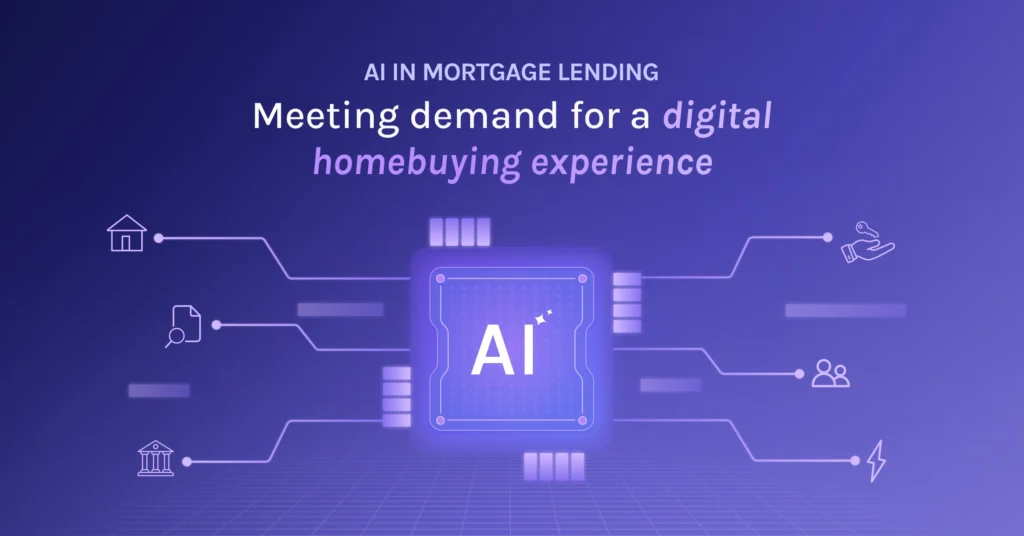AI in mortgage lending: meeting demand for a digital homebuying experience

As the role of technology has grown and evolved in all aspects of our daily lives, so have the preferences of homebuyers.
Millennials continue to dominate homeownership, bringing with them a strong preference for fast, transparent mortgage experiences. AI-powered tools help lenders keep pace with these expectations and gain a competitive edge.
Leading mortgage lenders are already leveraging AI to capitalize on this trend in customer preferences. To provide homebuyers with a user-friendly experience, lenders should be modernizing their tech stack with AI-powered automation – and those who don’t risk losing their competitive edge.
Most borrowers prefer an online experience
According to PwC, most mortgage borrowers prefer a digital application process. Borrowers still value a personal connection at closing, but an online experience is high on borrowers’ priority list – especially young ones.
The PwC report also found that speed is one of the most important factors to borrowers in the lending process. Automated status updates are also popular among the majority of consumers, further backing the trend that technology-enabled features are a must-have for both borrowers and lenders.
After several years of growing in prominence in the lending industry, online experiences have arrived as the primary mode of lending. Lenders offering a seamless and efficient lending experience with automation and other cutting-edge tech have a leg up against the competition.
How AI-powered automation streamlines mortgage lending
Mortgage lenders are using AI-powered automation to meet this demand for a speedy digital experience, while simultaneously improving efficiency in their own operations.
Forward-thinking lenders are using AI to drive efficiency in several ways. They range from automating manual, error-prone tasks to simplifying income calculations and enabling powerful analytics.
Ocrolus’ document automation solution, for example, automatically indexes and extracts data from borrower documents, significantly reducing the need for manual data entry and the risk of human error. As a result, lenders can create a more streamlined lending experience for the borrower.
As non-traditional income streams have become more common among borrowers, lenders are faced with more complex income calculations that can mean a longer underwriting process. AI has emerged as a crucial tool for automating these complex calculations so underwriters can spend more time on the personal aspects of lending that really matter, such as nurturing customer relationships.
Watch this brief video to see how Ocrolus automates document review and speeds up underwriting.
Navigating the digital lending landscape
Today’s tech-driven lending landscape may seem like a dramatic departure from the traditional lending approach. However, it’s important to keep in mind that the transition to online services has been long and gradual, and customers have grown accustomed to digital experiences in nearly everything they do.
A large number of consumers almost certainly do most of their banking through online platforms and applications. What’s more, they may already be using AI in their daily lives.
AI-driven document automation helps lenders meet customers where they are and deliver a smoother, more efficient lending process. As a result, they can accommodate customers’ preferences while maintaining their edge in an increasingly competitive lending landscape.
Book a demo today to learn how lenders can modernize their workflows with AI-powered automation.
Key takeaways:
- Millennials are expected to continue to make up the majority of homeowners in 2025, and this demographic largely prefers a digital mortgage lending experience.
- Lenders can accommodate these customers’ preferences by modernizing their tech stack with AI-powered document automation.
- In addition to providing customers with a positive digital experience, integrating AI technologies into underwriters’ workflows can result in significant gains in operational efficiency.


